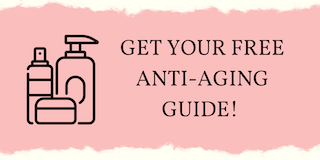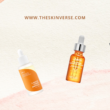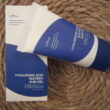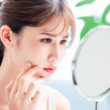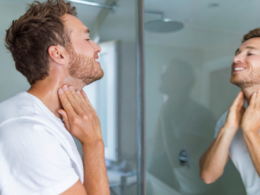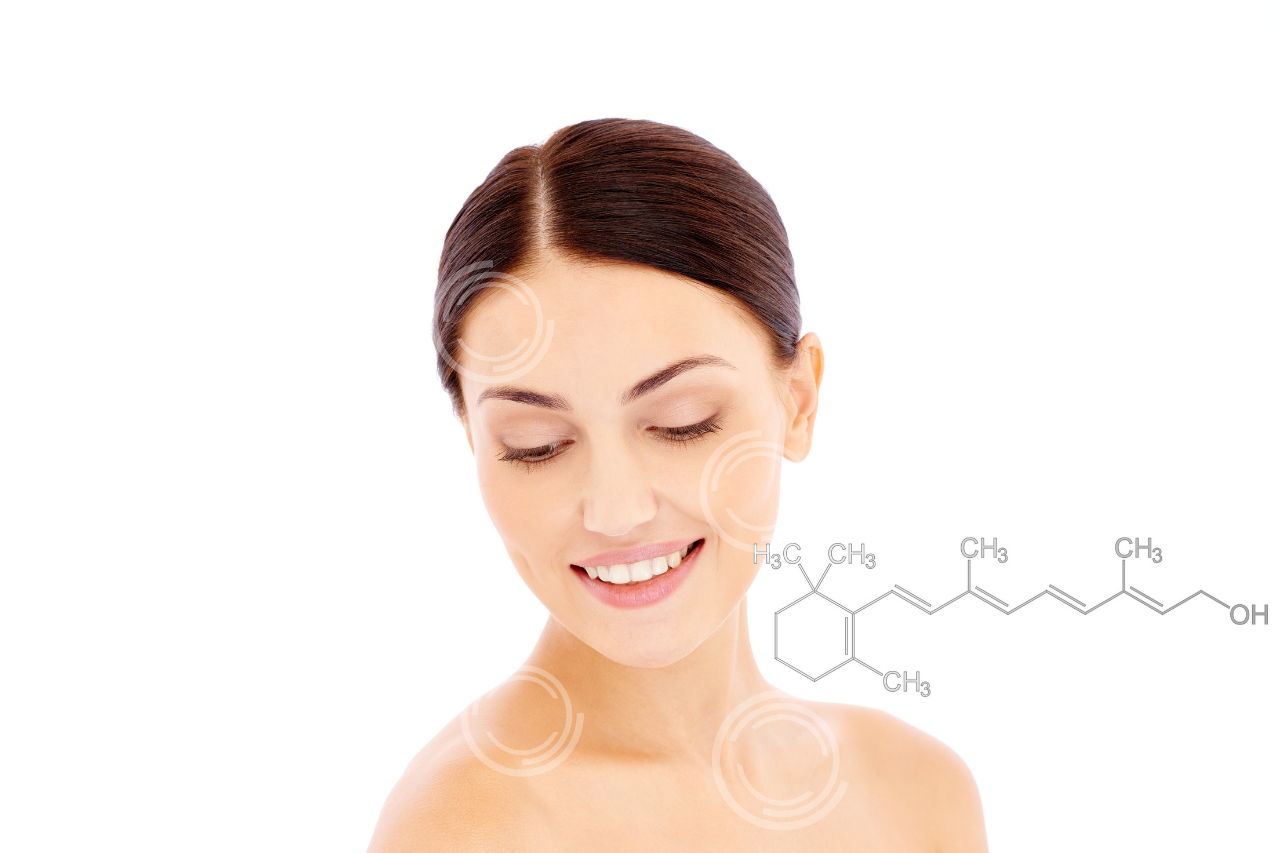If you are no stranger to the skincare game, you already have some idea of what exfoliation means.
Just like everything in nature, your skin needs to renew itself. Your skin constantly sheds dead cells to look fresh and radiant. Over time, its ability to cleanse itself weakens, and the upper layer of the epidermis becomes thicker, coarser, and loses its softness.
That is why it is necessary to regularly moisturize and nourish the skin, as well as remove excess dead cells from its surface. Chemical Exfoliants (or exfoliation) are an integral stage of effective skincare, it does an excellent job with this task.
Types of exfoliation
There are mainly two types of exfoliation: Physical and Chemical.
Physical exfoliation is done with the help of scrubs. They can be either based on natural ingredients such as coffee grounds, coconut, sugar particles, or synthetic agents.
Chemical exfoliation refers to a wide range of acids that do the same job. Chemical exfoliation refers to a more effective exfoliation, which we are going to talk about later.
What is the difference between physical and chemical exfoliation?

Before we delve into the types of chemical exfoliants, it is important to know how they differ from the other guys named physical exfoliants.
As you can tell from the name, CEs (Chemical Exfoliants) remove dead skin cells chemically, while PEs (you guessed it, Physical Exfoliants) do this manually via scrubs. Some skincare tools that you find at your local beauty salon can do the same thing too.
What is a chemical exfoliant and how does it work?
Technically, they are acids (or enzymes) that have a mission: they remove dead skin cells and stimulate skin regeneration. That’s the foundation of how chemical exfoliation works.
There are bonds that hold skin cells together like glue. When you apply one of these acids to your skin, it makes its way to the lower layers of the skin and sort of “breaks” those bonds. So, old skin cells are removed paving the way for fresh, renewed skin layers.
And with regular use, your skin looks more even in tone, more radiant, and healthier.
What are the types of chemical exfoliants?
There are three main kinds of chemical exfoliants: AHAs, (a.ka. alpha hydroxy acid) BHAs, (a.ka. beta-hydroxy acids), and PHAs. (a.ka. poly-hydroxy acids)
AHAs and BHAs are probably the most popular among them, you can find them in most skincare products.
PHAs are considered types of hydroxy acids, along with AHAs and BHAs. A new generation of AHAs, if you will. They are also chemical exfoliation agents, they have antioxidant properties and are the least likely to irritate sensitive skin.
AHAs: What are they and how do they work?
Alpha-Hydroxy Acids, AHAs, are mainly derived from fruits. They are water-soluble which means they dissolve in water. Just like the other counterparts, they work towards new skin cell turnover by working on the surface of the skin.
Types of AHAs

Best Product Picks with AHAs:
Paula’s Choice Skin Perfecting 8% AHA Gel Exfoliant
By Wishtrend 5% Mandelic Acid Skin Prep Water
Sunday Riley Good Genes All-In-One Lactic Acid Treatment
Glycolic acid: This is one of the most common AHAs, and also has the smallest molecules. Why is this important you ask? Because the tinier the molecule size is, the easier it is for the skin to absorb it. As a result, glycolic acid exfoliates the skin more effectively than other guys in the AHAs family.
Glycolic acid is great for normal to oily skin types, as they tend to clear the pores and make them less visible. For this reason, you can find them in a number of face cleansers, toners, and so on. This study concluded that when paired with Retinoic acid, it improved the appearance of acne scars in 91.4% of the patients just after 12 weeks.
Lactic acid: This is the second most popular AHA on the list. As you can tell from its name, it is derived from milk. If you are struggling with hyperpigmentation, or fine lines, this one’s for you. Contrary to glycolic acid, Lactic acid is one of the mildest forms of AHAs, so it is safe for sensitive skin.
Mandelic acid: It is the mildest AHA out there and is made from yes, you got it, bitter almonds. Because it is the mildest, all skin types are welcome to benefit from it.
It’s especially great for redness, rosacea-prone, and sensitive skin types. It doesn’t irritate the skin, helps improve acne, and age spots, and brightens the skin complexion.
Malic acid: It comes from apples, and is again, one of the gentle acids of the family. Malic acid, when used regularly, smoothes skin texture. It is technically a humectant, meaning its main duty is moisture retention of the skin.
Tartaric acid: The name might not ring a bell for some at first, but it has been around for a while. You can find it in fruits such as grapes, apples, apricots. It is widely used in plenty of cuisines due to its tangy-fruity flavor.
In skincare, tartaric acid is known for being a gentle exfoliator. And because of this, regardless of your skin type, (even sensitive skin) can enjoy using it. Tartaric acid is packed with antioxidants (therefore, the anti-aging benefit – fighting free radicals) and keeps the skin’s PH level stable. And that makes it a champion AHA for irritation-prone skin types.
Phytic acid: This is a weak member of the AHA family, it boasts skin-lightening properties. It comes from grains, legumes, and rice. According to studies, when phytic acid and glycolic acid work together, they yield great results in improving skin tone.
Citric acid: Despite being a rather less potent AHA type, citric acid offers a range of benefits for skin exfoliation. It is a very common ingredient both in skincare and food, even in some household cleaning products.
Citric acid is generally safe for all skin types, but it is especially good for oily skin types because of its astringent (pore tightening that helps regulate excess oil) quality. Oftentimes it is used with other chemical exfoliation products, however, this can cause some irritation if you have extra sensitive skin.
Do AHAs make your skin sensitive to sun exposure?
Yes. It is known that using AHAs increases the photosensitivity of the skin, making it more vulnerable to UV ray exposure. Studies initiated by the FDA and sponsored by the National Toxicology Program suggest that when applying glycolic acid, for example, you can make your skin more susceptible to sun damage, including sunburn.
Azelaic acid: Neither an AHA nor a BHA
There are some acids that don’t belong to the AHA and the BHA family, and azelaic acid is one of them. Technically, it is a dicarboxylic acid that is derived from ingredients like wheat, and barley.
It is a truly underestimated ingredient in skincare that has gained some popularity recently. It is suitable for all skin types and is especially effective when treating discoloration and redness. It also has antibacterial properties, so it is also used in acne treatment.
If you have sensitive skin, you will probably benefit the most from using azelaic acid.
BHAs: What are they and how do they work?
BHA stands for Beta-Hydroxy Acids and they come from plants, mainly from the bark of the willow tree.
BHAs are oil-soluble (in other words, lipolytic) which means they have the ability to dissolve in oils and fats. This is where BHAs truly stand out, as this gives them the opportunity to penetrate through deeper layers of the skin. This makes it a miracle element for oily skin types, as they have clogged pores that in turn lead to acne breakouts.
Why is it important you ask? Well, here’s the deal: when dead skin cells clog your pores causing blackheads, whiteheads, acne, and warts, BHAs come to the rescue and dissolve those bad guys.
Types of BHAs
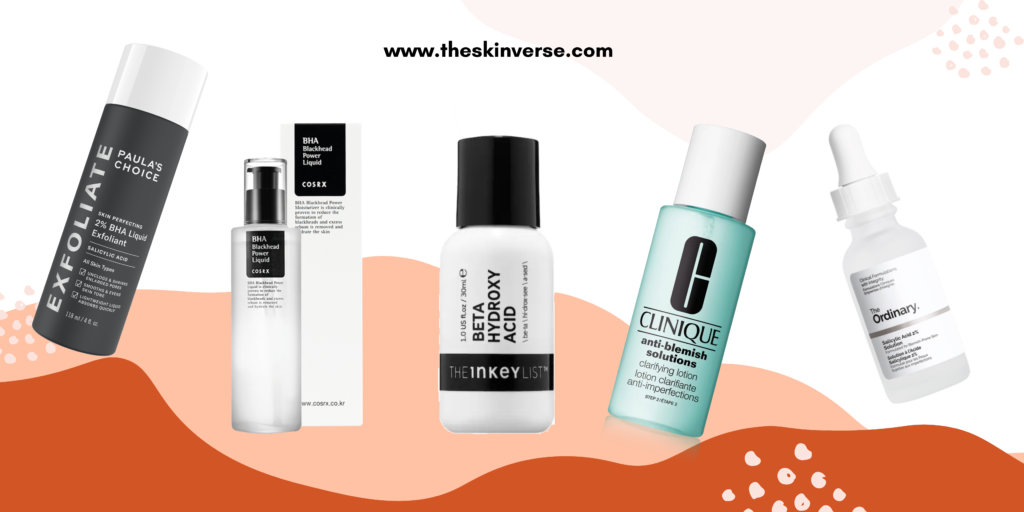
Best Product Picks with BHA’s:
Paula’s Choice Skin Perfecting 2% BHA Liquid Exfoliant
Cosrx BHA Blackhead Power Liquid
INKEY List Beta Hydroxy Acid (BHA) Blemish + Blackhead Serum
Clinique Anti-Blemish Solutions™ Clarifying Lotion for Blemish-Prone Skin
The Ordinary Salicylic Acid 2% Solution
Salicylic acid: This is probably the most popular, tried, and true, God-sent BHA that is a remedy to most acne-related problems. Aside from fighting acne, it also has anti-inflammatory and anti-bacterial properties. So, it can help with skin conditions like redness, and rosacea. If you are using an AHA to deal with these issues, consult with your dermatologist first.
Betaine salicylate: Coming from the sugar beet plant, it is a keratolytic agent (meaning it has a peeling property) that is similar to salicylic acid. However, unlike salicylic acid, it is way more gentle on the skin. For this reason, betaine salicylate works better for those who experience mild acne.
Salix alba: Being a natural BHA, Salix alba is extracted from white willow trees. As you can tell from the name, it contains natural salicylates and is a close alternative to its big brother, salicylic acid with a relatively lower concentration. So, don’t expect any overnight results if you are fighting acne.
According to FDA, BHA ingredients may be listed as the following:
- salicylic acid (or related substances, such as salicylate, sodium salicylate, and willow extract)
- beta-hydroxybutyric acid
- tropic acid
- trethocanic acid
IMPORTANT: It is very super important to wear sunscreen when using BHAs. Even though BHAs are less likely to make your skin sensitive to the Sun unlike AHAs, it is crucial that you prevent further sun damage.
What do AHAs and BHAs have in common?
Exfoliation: Both AHAs and BHAs exfoliate your skin, helping get rid of dead skin cells. They boost new cell production which gives the skin the younger look.
Anti-aging effect: They both smooth out fine lines and wrinkles, and deal with age spots. Studies have shown that an anti-aging skincare routine including AHAs significantly enhances skin condition by improving wrinkles and skin texture, as well as its elasticity.
It is hard to imagine chemical exfoliation without the anti-aging factor.
Acne treatment: Both of them (especially salicylic acid, a BHA) remove dead skin cells, which means they prevent pores from getting clogged. Clogged pores is the number one reason that you get acne breakouts.
Skin brightening properties: Due to this quality, you can find lots of products that include AHAs and BHAs for a more radiant skin finish. Generally speaking, chemical exfoliation enjoys a number of benefits for the skin.
Moisturizing: Both AHAs and BHAs share hydrating qualities, although BHAs are mainly used for treating oily skin prone to acne. They help the skin retain moisture and contribute to protecting the skin barrier.
What is the difference between BHA and AHA?
Although these popular chemical exfoliation names have a lot in common, they also have many differences.
AHAs are water-soluble, which means they only work on the surface level of the skin. They are mainly used on normal to dry skin types due to their hydrating abilities. AHAs are also effective for treating sun-damaged skin since they reduce hyperpigmentation on the skin.
BHAs, on the other hand, are oil-soluble. This means not only do they work on the surface, but also in deeper layers of the skin, penetrating through the pores. That’s why they have proven more effective than AHAs when treating blemishes, acne, warts, and enlarged pores that are typical for oily skin.
BHAs, unlike AHAs, are less irritating. You are more likely to develop some reactions like burning, irritation, or very dry skin if you use a higher concentration product or apply it too frequently.
To quote one study that has been conducted: whether AHA is a friend or foe of human skin depends on its concentration.
AHAs can cause photosensitivity, so you should either apply them only at night or strictly with SPF in the daytime. So, never forget your sunscreen when using any type of AHA, it is a must!
BHAs don’t cause sensitivity to sunlight, so you can use them either in the daytime or at night. With that said, it is vital to use SPF no matter what chemical exfoliant you use.
What is the right chemical exfoliant for me? Should you use AHA or BHA?
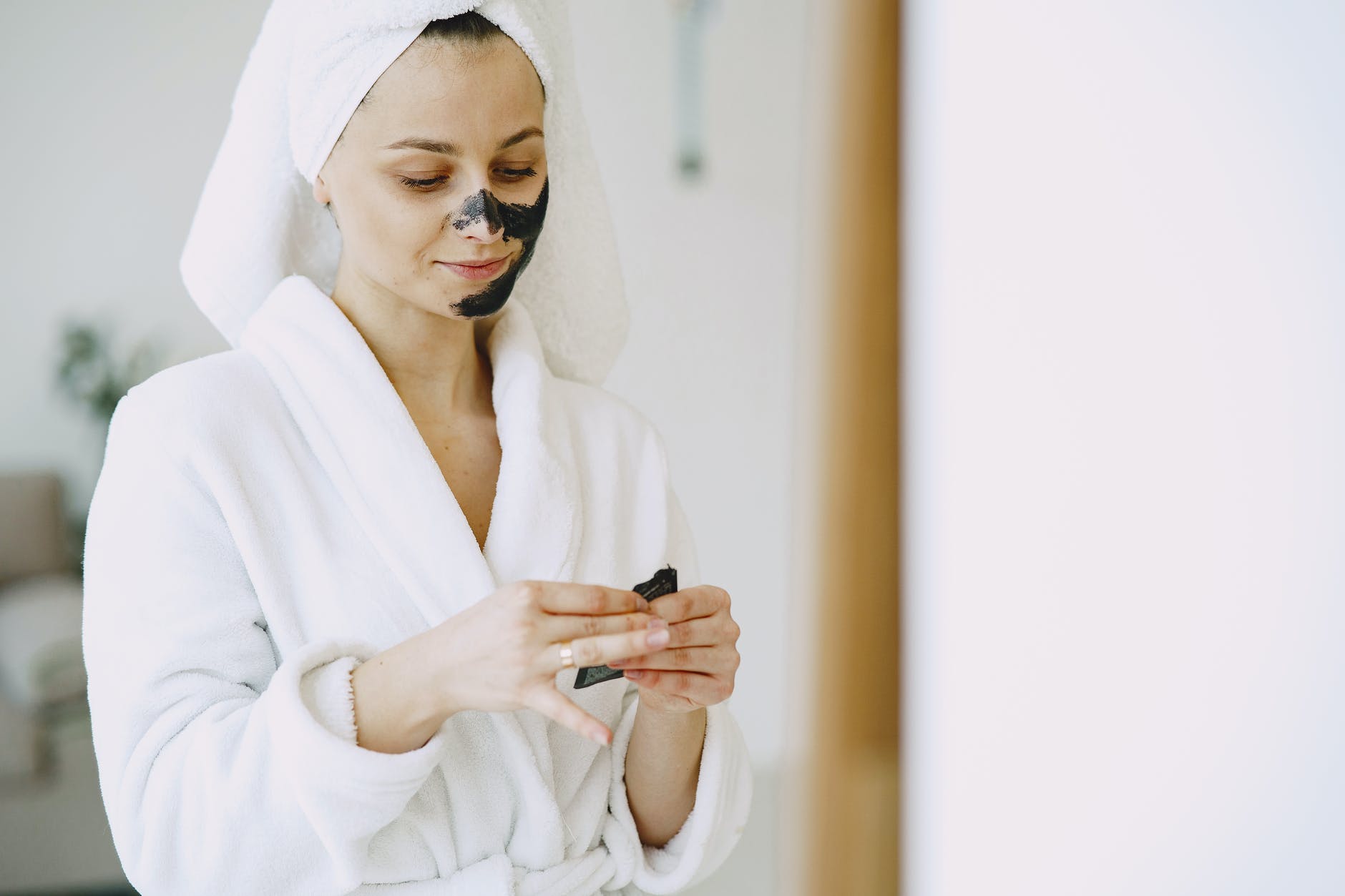
Well, that is the million-dollar question of the century.
Here is a quick rundown:
If you suffer from skin pigmentation:
For those who struggle with pigmentation, discoloration, and spots on their skin, AHA might be more beneficial to you. Although a lower concentrated BHA can also do the job as well.
If you have dry skin:
Preferably an AHA product would do better due to its moisturizing properties. As dry skin tends to be more susceptible to sun damage, AHA is going to reduce the ultimate signs of UV ray damage.
If you have sensitive skin:
Mandelic acid or lactic acid from the AHA family would be your best bet here, as they are the mildest and the most hydrating acids. Start with the lowest concentrations at 5% or 8%, and see how your skin reacts.
If your skin can tolerate it, you can take it up a notch to 10% or so. With that said, you can use a gentler BHA at the lowest concentrations because it has natural skin-calming properties, so it works for skin that’s sensitive or prone to redness. (0.5%-1% salicylic acid, for example)
If you have blemishes, acne-prone/oily skin:
In your case, BHA and salicylic acid should go as synonyms. Salicylic acid will regulate the sebum (oil) production on the skin, shrink enlarged pores, and even out the texture of the skin.
If you want to boost collagen production:
It’s known that AHAs support collagen production which is essential for maintaining healthy, younger-looking skin. If you want to reduce the appearance of wrinkles and give your skin an anti-aging dose, go for an AHA. Use a BHA alongside an AHA guy for a more polished look.
Can you use AHAs and BHAs together?
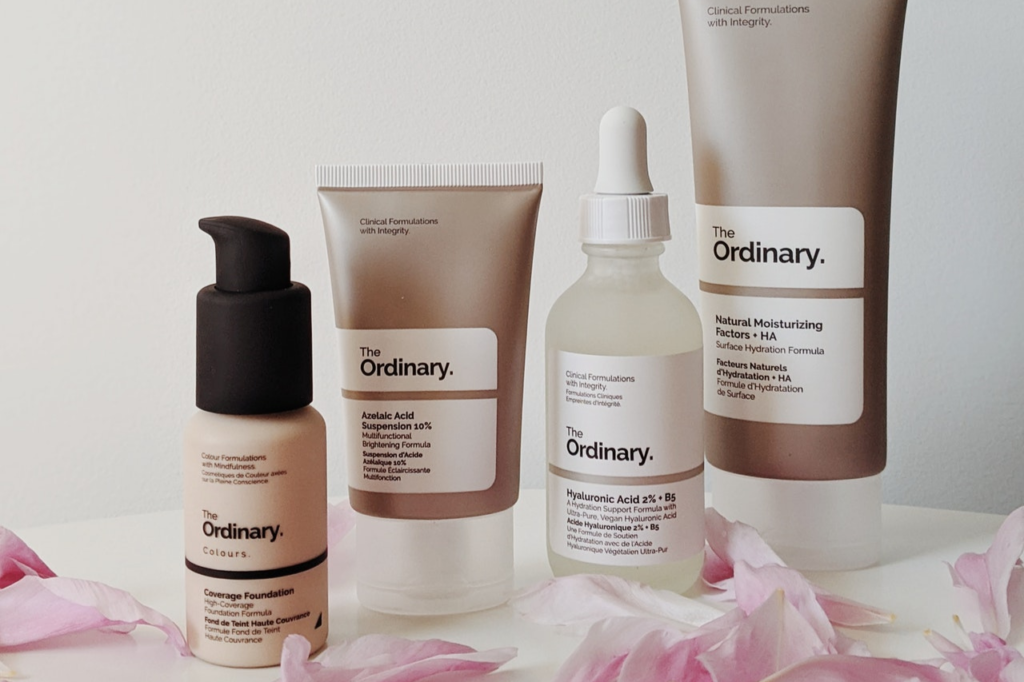
The short answer is: Yes. However, the main issue here is being careful not to over-exfoliate. Because they are powerful exfoliants, it is very essential that you use the right concentrations so you won’t overdo it and damage your skin while trying to help it. When coming up with the right chemical exfoliation, always start with a minimum amount of product.
It is wiser to use them separately, rather than layering them together. Otherwise, it can cause redness, irritation, and dryness especially if you have sensitive skin.
Perhaps don’t use both of them during the same day, try to alternate the application days. Or if you want to experiment, maybe start with very low concentrations, apply a BHA in the morning or AHA at night.
Keep in mind that there might be another risk about using BHAs and AHAs together: Your skin can get more sensitive to sunlight. So, make sure you avoid sun exposure and apply a very strong sunscreen to finish off your routine.
Are there any risks to chemical exfoliation?
Just like with any skincare product, there are some risks to using chemical exfoliants. Although BHAs are less likely to irritate your skin, they can certainly have adverse effects on dry and sensitive skin. Both BHAs and AHAs can have allergic reactions such as extreme dryness, redness, and skin pigmentation.
That’s why it is wiser to start with a lower concentrated product (for instance, for BHAs, 1% or 2%, for AHAs 5%) to minimize potential skin damage.
As we mentioned before, it is a must to use sunscreen (SPF 30 at least) at the end of your skincare routine with chemical exfoliants.
Because we all have different skin reactions to AHAs and BHAs, consulting with your dermatologist would be the right move.
How to use AHAs and BHAs safely?
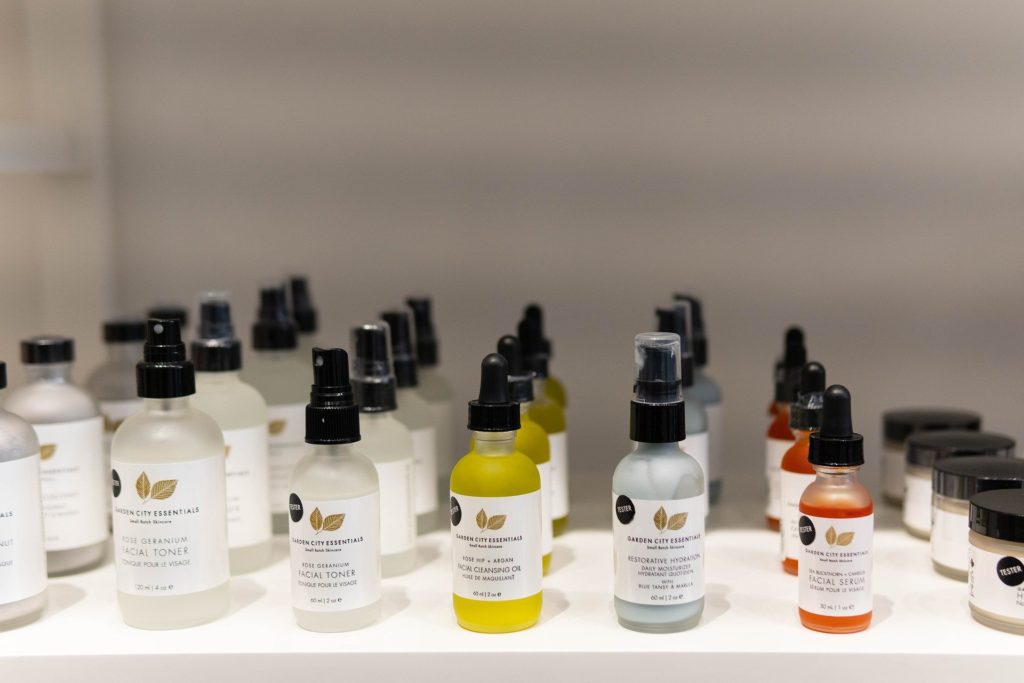
Here are some tips that will help you:
- Do a patch test on your arm or hand before you apply an adequate amount of product to your face. If you experience some reaction, stop using it and talk to your dermatologist.
- Finding out how often you need to use chemical exfoliants is a work in progress. Some people feel like using it 2-3 times a week is enough, for some, it’s daily or every other day. Definitely don’t overdo it, especially at the beginning, again, start with minimal numbers and work your way up if your skin tolerates it.
- Always use SPF, 30 or higher with AHAs and BHAs.
Are Chemical Exfoliants better than Physical Exfoliants?
In general, physical exfoliants can be harsh on your skin, especially if your skin is on the sensitive side. Abrasive parts; nut shells or sugars in facial scrub can do more bad than good by stripping off the skin barrier. They can also cause micro-tears in the skin.
That is not to say that physical exfoliants don’t work, it is just very important to use them moderately and not over-exfoliate. Chemical exfoliation, on the other hand, wouldn’t cause such problems.
That’s why chemical exfoliation is more advantageous. Not only because it removes dead skin cells off the surface of the skin, but they also penetrate deeper layers of the skin and work more effectively.
So, chemical exfoliants win this round too! And it is time to throw away that apricot scrub in your bathroom.
Bottomline
We hope you already have some idea about how to proceed with your AHA or BHA after reading this piece. Whether it is AHA or BHA, the key is finding and trying out what works for you and definitely not overdoing it. Understanding chemical exfoliation can be a bit of a challenge, but you will get there.
By building your own chemical exfoliation routine, you will guarantee more radiant, glowing, and healthy skin.

